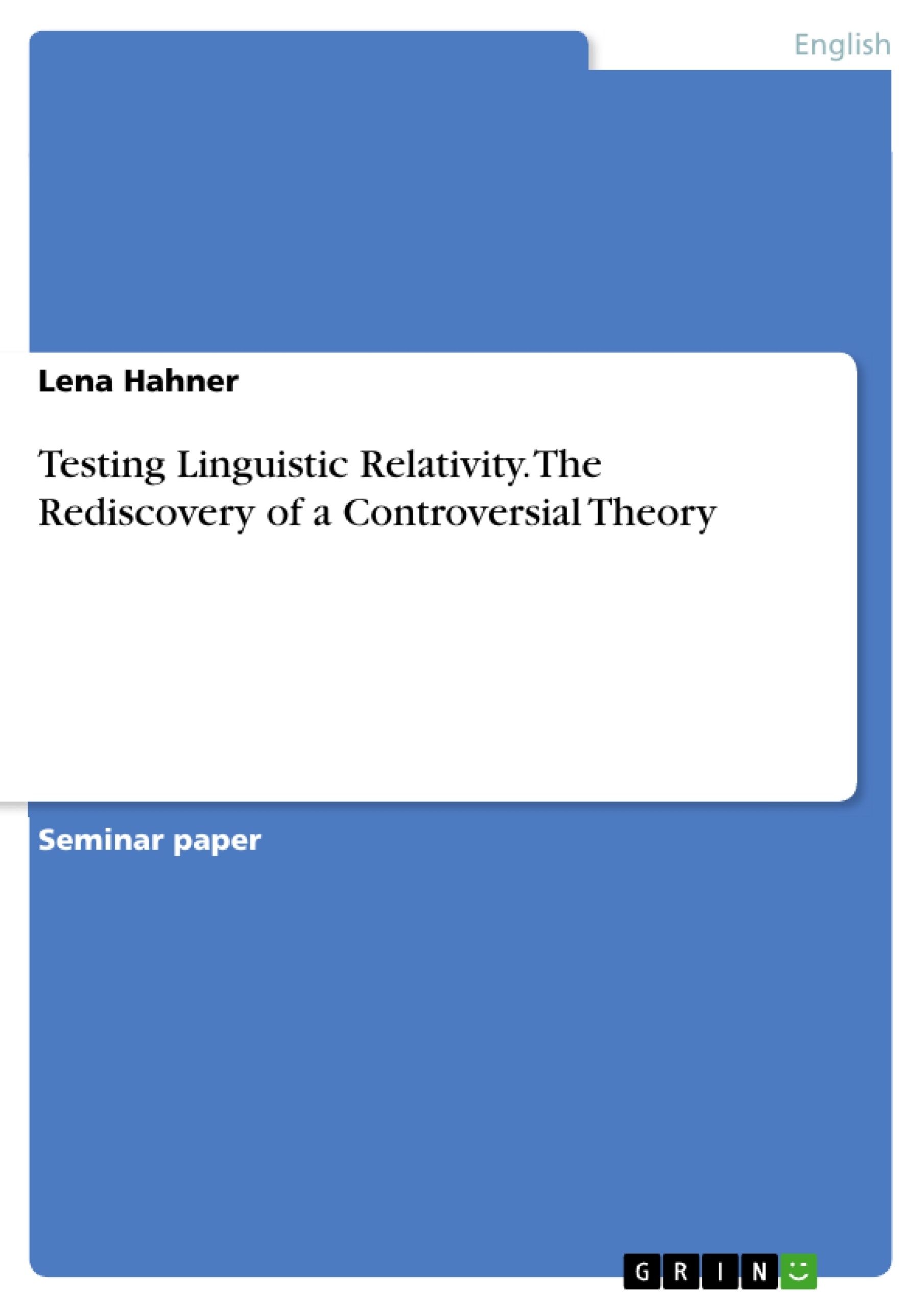This term paper deals with different approaches in linguistic relativity research, proving the thesis that the question whether linguistic relativity does or does not exist cannot be answered with a simple yes or no, but that the answer lies in between.
The theoretical framework will be provided by an overview of the theory of linguistic relativity, whose history of origins will be introduced briefly in the beginning, followed by a review of its criticism. Subsequently, two studies will be presented and interpreted, one trying to prove and one trying to disprove the hypothesis
Table of Contents
I. Introduction
II. The Sapir-Whorf-Hypothesis – a Short History of a Controversial Theory
II.1 The Sapir-Whorf-Hypothesis
II.2 Review of the Theory of Linguistic Relativity
III. Opposing and Supporting Linguistic Relativity – Two Studies
III.1 Disproving Linguistic Relativity: Altarriba/Tse (2008) in response to Boroditsky (2001) and January/Kako (2007)
III.1.1 Design and Method
III.1.2 Results
III.1.3 Discussion and Conclusion
III.1.4 Interpretation
III.2 Proving Linguistic Relativity: Boroditsky/Gaby (2010)
III.2.1 Design and Method
III.2.2 Results
III.2.3 Discussion and Conclusion
III.2.4 Interpretation
IV. Conclusion
Bibliography
Appendix
- Quote paper
- Lena Hahner (Author), 2016, Testing Linguistic Relativity. The Rediscovery of a Controversial Theory, Munich, GRIN Verlag, https://www.grin.com/document/358436
-

-

-

-
Upload your own papers! Earn money and win an iPhone X. -

-
Upload your own papers! Earn money and win an iPhone X. -

-
Upload your own papers! Earn money and win an iPhone X. -

-
Upload your own papers! Earn money and win an iPhone X. -

-
Upload your own papers! Earn money and win an iPhone X. -

-
Upload your own papers! Earn money and win an iPhone X. -

-
Upload your own papers! Earn money and win an iPhone X. -

-
Upload your own papers! Earn money and win an iPhone X. -

-
Upload your own papers! Earn money and win an iPhone X.

